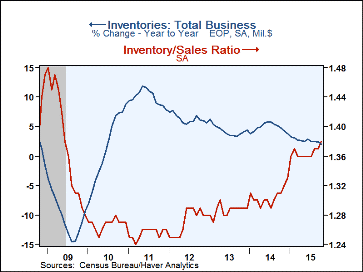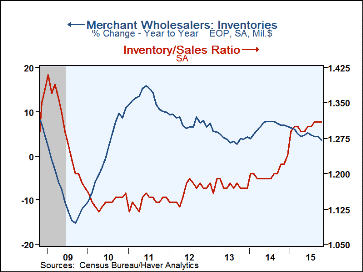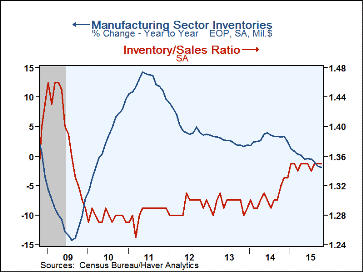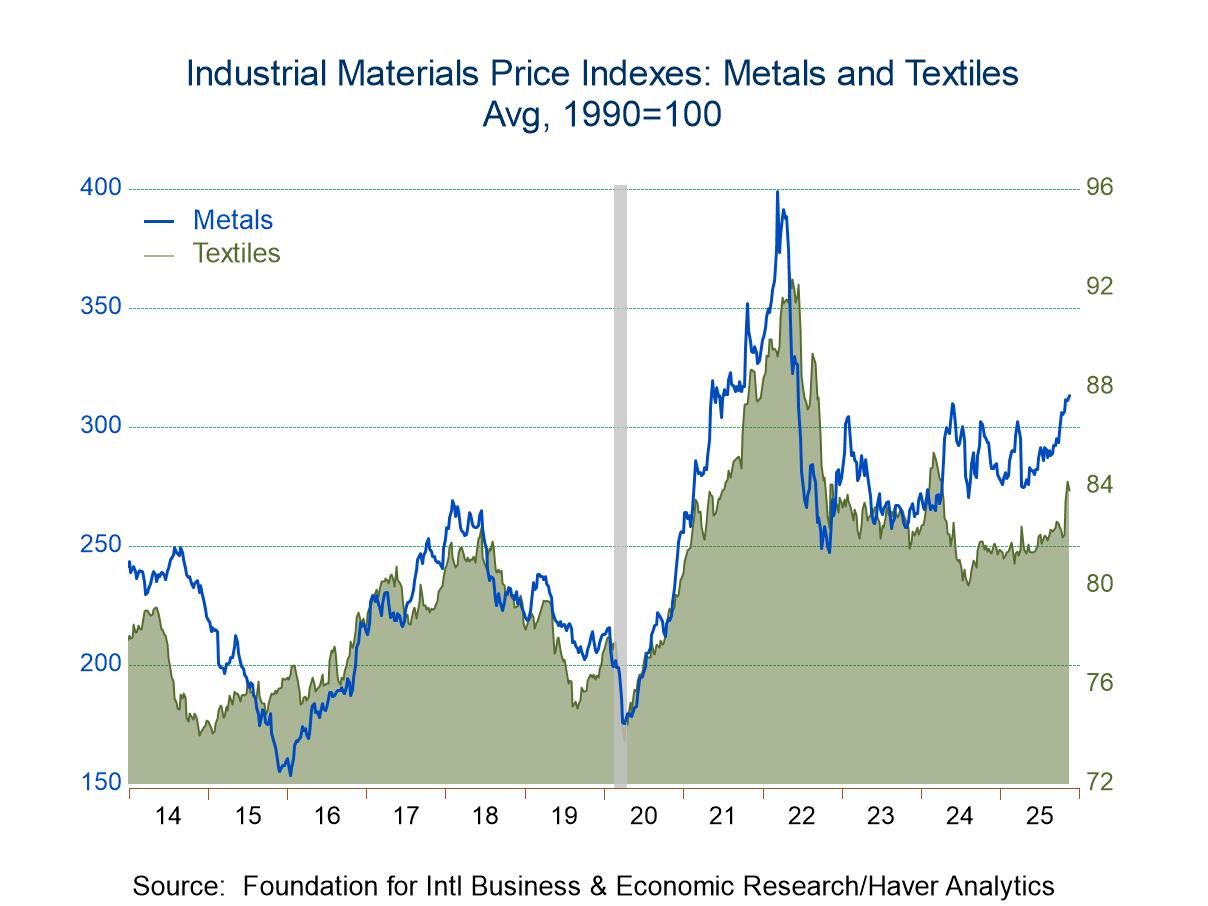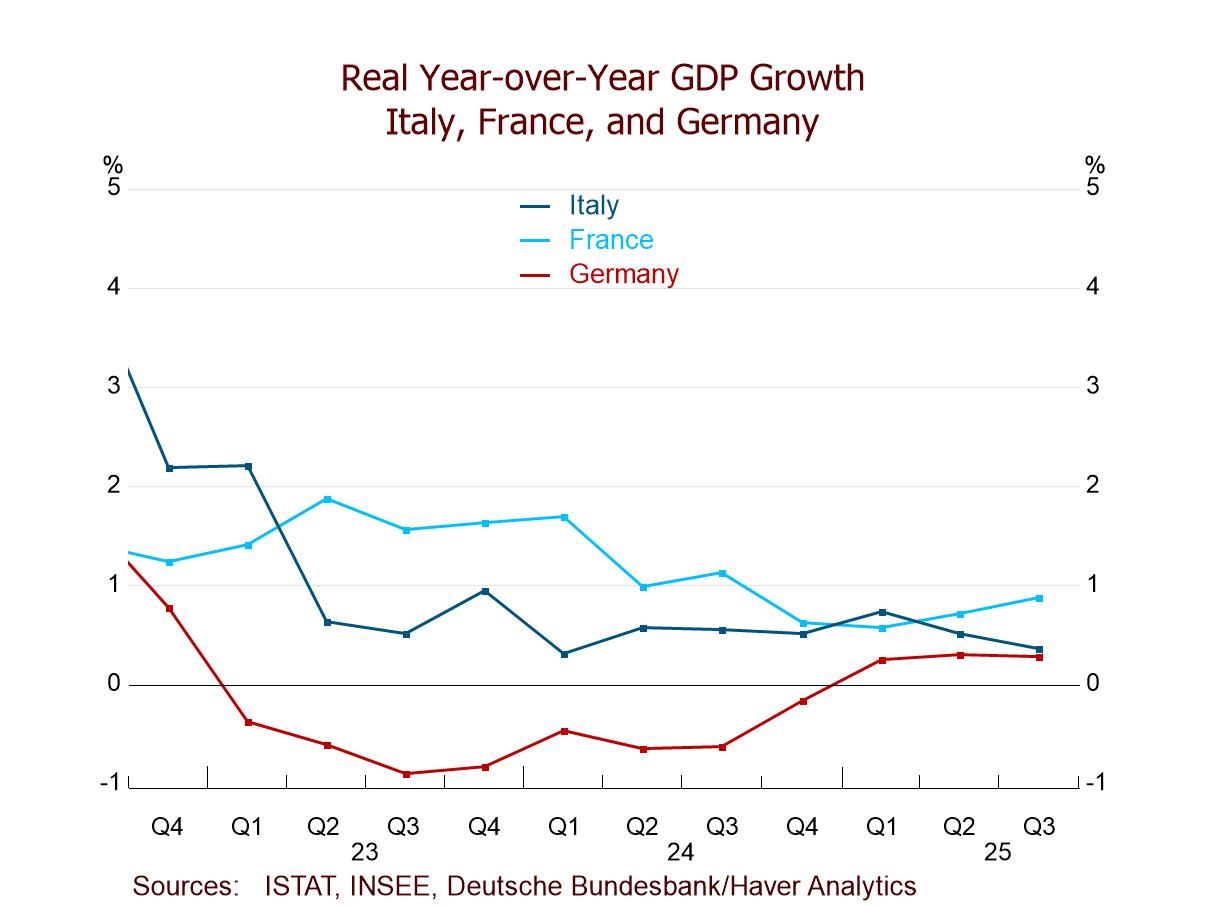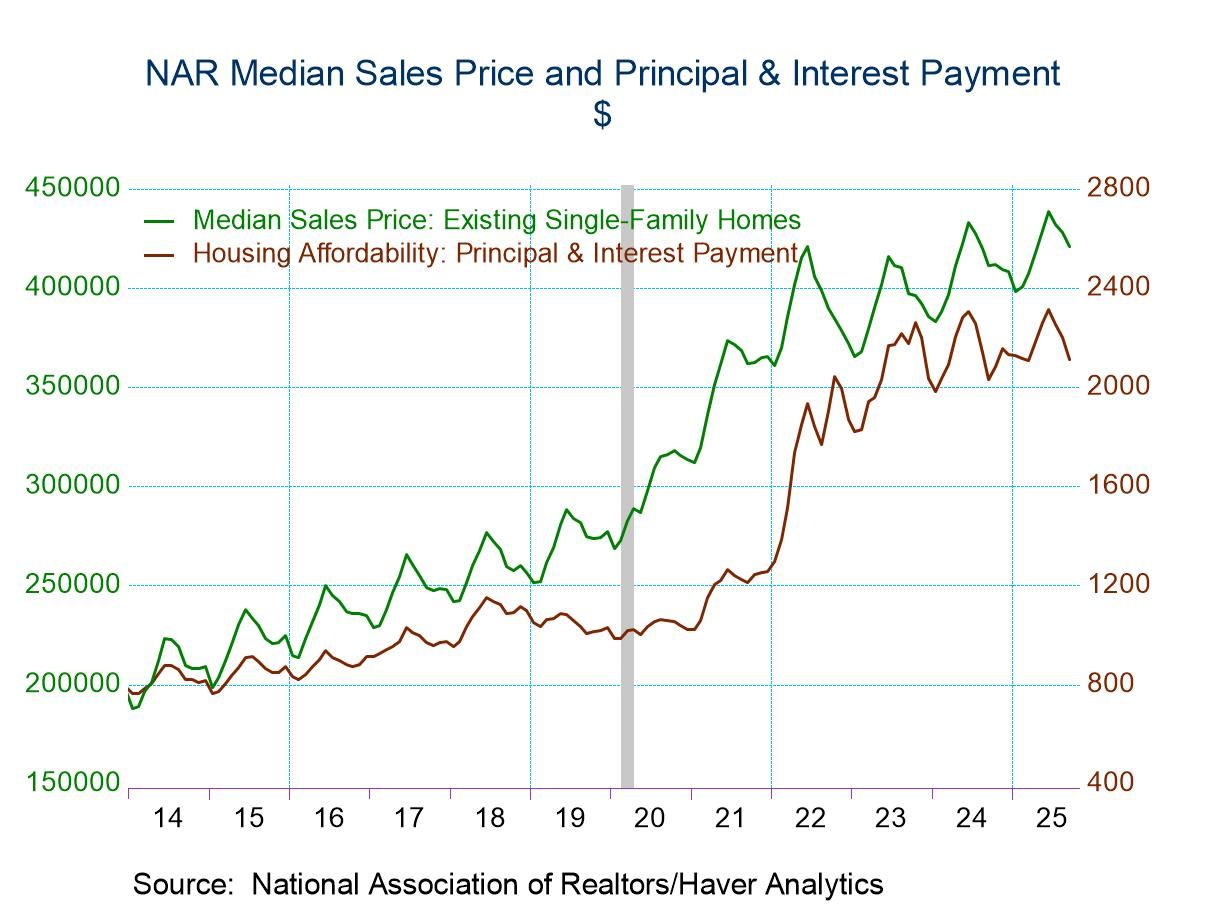 Global| Dec 11 2015
Global| Dec 11 2015U.S. Business Inventories Are Little-Changed M/M; I/S Ratios Trend Higher
by:Tom Moeller
|in:Economy in Brief
Summary
Total business inventories posted a negligible decline during October (2.0% y/y) following a 0.1% September rise. Retail inventories gained 0.1% (5.0% y/y) after a 0.8% increase. Motor vehicle & parts inventories eased 0.4% (+6.5% [...]
Total business inventories posted a negligible decline during October (2.0% y/y) following a 0.1% September rise.
Retail inventories gained 0.1% (5.0% y/y) after a 0.8% increase. Motor vehicle & parts inventories eased 0.4% (+6.5% y/y) but growth had been accelerating all year. Outside of the vehicle sector, retail inventories gained 0.4% (4.2% y/y) after two months of 0.5% increase. Building materials grew 1.1% (6.5% y/y) and food and beverage store inventories increased 0.3% (2.5% y/y). General merchandise store inventories rose 0.3% (3.4% y/y) for a third straight month. Furniture & home furnishings inventories declined 0.7% (+1.6% y/y) and clothing store inventories eased 0.1% (+5.2% y/y).
Merchant wholesalers inventories eased 0.1% (+3.6% y/y) while the value of factory sector stockpiles also fell 0.1% (-1.8% y/y), down for the fourth straight month.
Business sales during October eased 0.2% (-2.7% y/y) after remaining unchanged. The reading reflected unchanged retail and wholesale sales. Factory sector sales declined 0.5%.
The business sector inventory-to-sales ratio rose to 1.38, equaling its highest level since June 2009. The rise reflected stability in the retail sector at 1.48, its highest level since May 2009. The merchant wholesale I/S ratio of 1.31 equaled its highest since 2009 as did the factory sector ratio of 1.35.
The manufacturing and trade data are in Haver's USECON database.
| Manufacturing & Trade (%) | Oct | Sep | Aug | Oct Y/Y | 2014 | 2013 | 2012 |
|---|---|---|---|---|---|---|---|
| Business Inventories | -0.0 | 0.1 | 0.1 | 2.0 | 3.9 | 4.3 | 5.8 |
| Retail | 0.1 | 0.8 | 0.5 | 5.0 | 2.7 | 7.6 | 7.4 |
| Retail excl. Motor Vehicles | 0.4 | 0.5 | 0.5 | 4.2 | 2.2 | 4.9 | 2.9 |
| Merchant Wholesalers | -0.1 | 0.2 | 0.3 | 3.6 | 6.7 | 4.2 | 6.6 |
| Manufacturing | -0.1 | -0.5 | -0.4 | -1.8 | 2.4 | 1.7 | 3.8 |
| Business Sales (%) | |||||||
| Total | -0.2 | 0.0 | -0.6 | -2.7 | 3.5 | 2.8 | 5.2 |
| Retail | 0.0 | -0.1 | -0.0 | 1.1 | 3.5 | 3.8 | 4.9 |
| Retail excl. Motor Vehicles | 0.1 | -0.6 | -0.1 | -0.5 | 2.6 | 2.6 | 3.9 |
| Merchant Wholesalers | -0.0 | 0.5 | -0.9 | -3.7 | 4.3 | 3.0 | 6.2 |
| Manufacturing | -0.5 | -0.3 | -0.9 | -4.7 | 2.6 | 1.9 | 4.7 |
| I/S Ratio | |||||||
| Total | 1.38 | 1.37 | 1.37 | 1.31 | 1.31 | 1.29 | 1.27 |
| Retail | 1.48 | 1.48 | 1.47 | 1.43 | 1.43 | 1.41 | 1.38 |
| Retail Excl. Motor Vehicles | 1.29 | 1.29 | 1.28 | 1.24 | 1.24 | 1.23 | 1.21 |
| Merchant Wholesalers | 1.31 | 1.31 | 1.31 | 1.22 | 1.20 | 1.18 | 1.16 |
| Manufacturing | 1.35 | 1.35 | 1.35 | 1.32 | 1.31 | 1.30 | 1.29 |
Tom Moeller
AuthorMore in Author Profile »Prior to joining Haver Analytics in 2000, Mr. Moeller worked as the Economist at Chancellor Capital Management from 1985 to 1999. There, he developed comprehensive economic forecasts and interpreted economic data for equity and fixed income portfolio managers. Also at Chancellor, Mr. Moeller worked as an equity analyst and was responsible for researching and rating companies in the economically sensitive automobile and housing industries for investment in Chancellor’s equity portfolio. Prior to joining Chancellor, Mr. Moeller was an Economist at Citibank from 1979 to 1984. He also analyzed pricing behavior in the metals industry for the Council on Wage and Price Stability in Washington, D.C. In 1999, Mr. Moeller received the award for most accurate forecast from the Forecasters' Club of New York. From 1990 to 1992 he was President of the New York Association for Business Economists. Mr. Moeller earned an M.B.A. in Finance from Fordham University, where he graduated in 1987. He holds a Bachelor of Arts in Economics from George Washington University.


